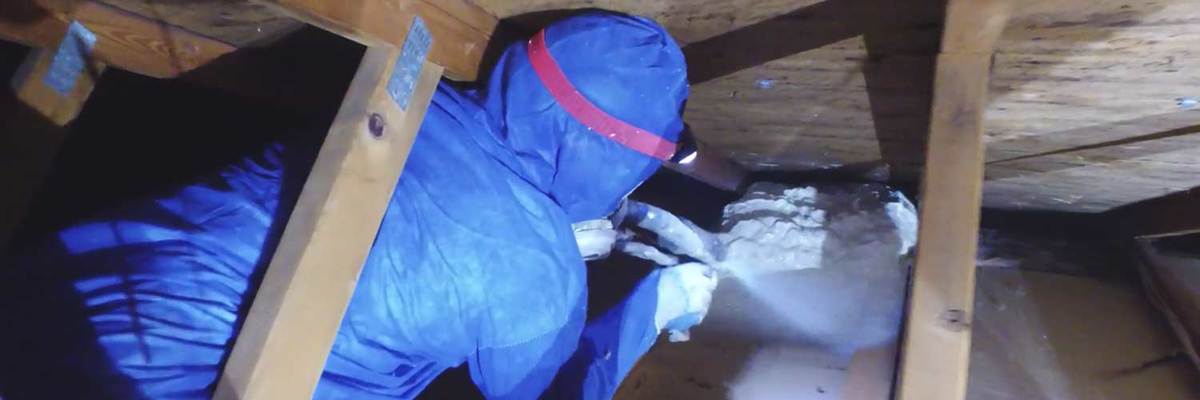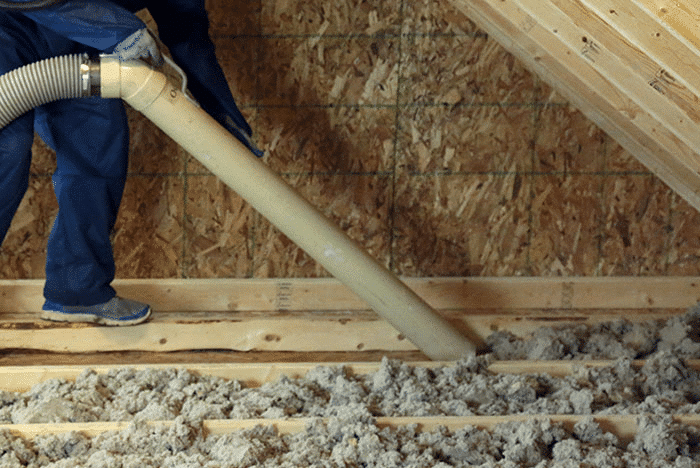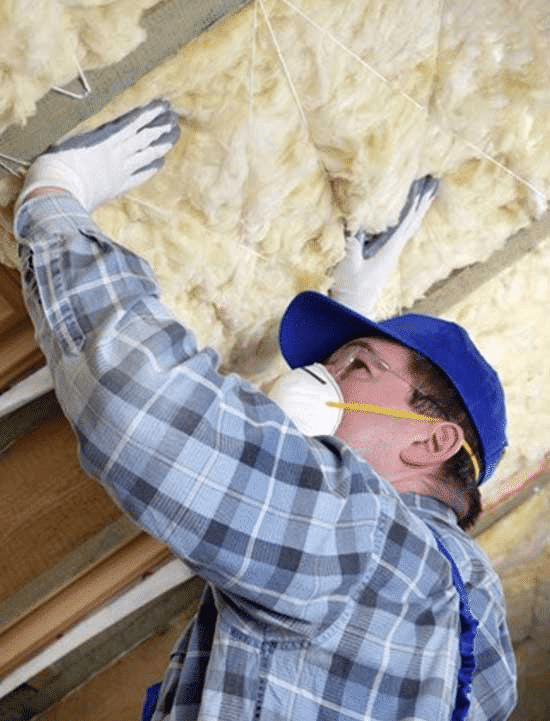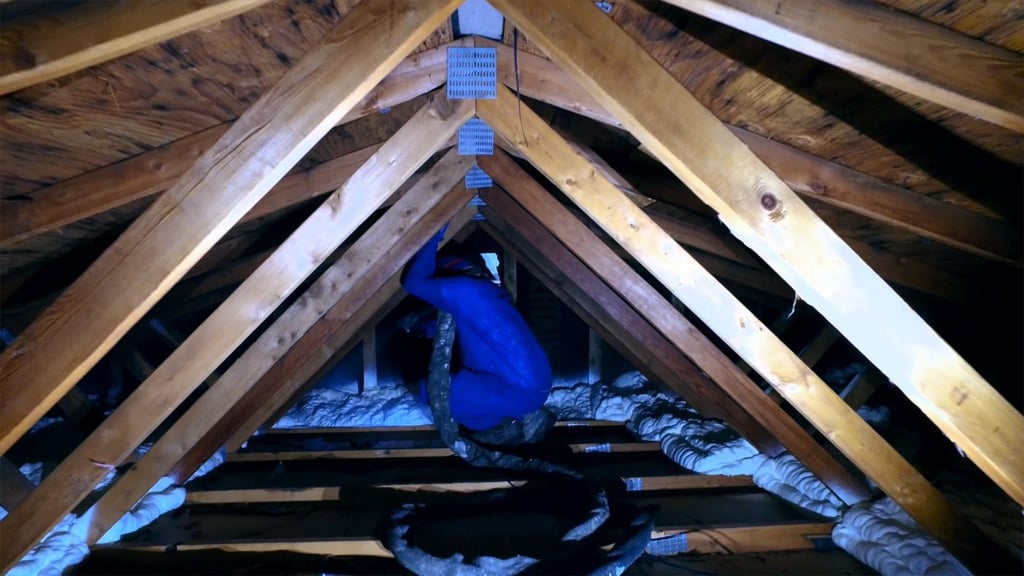How to Insulate an Attic


You know your attic is in need of new insulation, but the big question remains – how do you insulate it?
Inadequate or no insulation in your attic can cause several problems, including problems maintaining a constant temperature, high monthly energy bills, and mold and mildew growth, just to name a few.
RetroFoam of Michigan has more than 20 years of experience insulating thousands of attics across the Mitten, so we know quite a bit about how to get the job done.
As part of our mission to educate homeowners, we will discuss the most common ways to insulate an attic in Michigan, including using cellulose, fiberglass, and spray foam insulation.
Cellulose Attic Insulation

Have you ever thought about using old newspapers or denim to keep your home cozy?
That's basically what cellulose insulation is.
Cellulose is the oldest insulation material used in homes and is made up of recycled newspapers or denim.
These small particles form an insulation material that conforms to most spaces without disturbing the structure or finish.
The material can be either loose-fill or blown-in and can be used in the attic.
Pros vs Cons of Cellulose Attic Insulation
Thinking about cellulose insulation for your attic?
Let's break down the pros and cons to help you decide.
Pros of Cellulose Insulation
First off, cellulose is a budget-friendly option. If you're a DIY enthusiast, this might be right up your alley.
You can save some money by tackling the project yourself.
Cons of Cellulose Insulation
But, here's the catch: if you don't install it correctly, it can turn into a dusty mess.
Loose-fill cellulose, especially in attics with furnace duct systems, can spread dust throughout your home.
Installation Insights
Now that we've covered the ups and downs, let's dive into how to insulate an attic with cellulose.
Proper installation is key to avoiding those pesky cons. Whether you choose to do it yourself or hire a pro, knowing the steps involved can make a world of difference.
Cellulose Attic Insulation Installation Process
Cellulose insulation can be installed as blown-in, loose-fill, or dense-packed. It can also be spray applied with moisture added.
The dry blown-in cellulose insulation can be installed by using a machine to blow the material into the floor joists of the attic.
When cellulose insulation is damp sprayed into the attic, a small amount of moisture is added at the spray nozzle tip, adding natural starches to the material helping it adhere to either the roof deck or floor of the attic.
Blown-in and dense-packed insulation can be installed as a DIY project or you can hire an experienced contractor. Homeowners with handyman experience are well suited for the insulation, but others who aren’t as experienced would be better off leaving the job to the professionals.
Cellulose Insulation Cost
The cost to insulate an attic with cellulose insulation can vary greatly depending on the material you plan to use and the size of the area to be insulated.
Another cost to consider is all the materials like gloves, face masks, goggles, and even the machinery to install the insulation.
Just adding more cellulose to existing insulation would be cheaper than if the attic has no insulation at all because more material is required.
Hiring an experienced contractor is the more expensive option, but can save the homeowner money in the long run and is less stressful. Many times if a homeowner isn’t experienced in installing the cellulose, they will use more product than they need as they attempt to figure out the correct coverage.
Fiberglass Attic Insulation

Fiberglass insulation is made of extremely fine glass fibers.
It is an insulation material that is used as batts and rolls or loose-fill.
Pros vs Cons of Fiberglass Attic Insulation
Are you thinking about using fiberglass for your attic insulation? Let's review the pros and cons so you can make an informed decision.
Pros of Fiberglass Insulation
Fiberglass insulation can be a cost-effective DIY project. It's a popular choice for homeowners looking to save some money while insulating their attic.
Cons of Fiberglass Insulation
However, safety is a big concern.
When working with fiberglass, you need to take proper precautions. Wear gloves, long sleeves, pants, goggles, and a face mask. The tiny fiberglass particles can irritate your skin and be harmful if inhaled.
Installation Insights
Ready to dive into how to insulate your attic with fiberglass?
Whether you go the DIY route or hire a pro, understanding the installation process is crucial. This way, you can ensure your attic is insulated safely and effectively.
Fiberglass Attic Insulation Installation Process
Fiberglass insulation can be installed in the attic as either a DIY project or a homeowner can hire an experienced and licensed contractor.
Fiberglass batts are typically stapled into place in the attic. These batts are manufactured with a paper or foil backing that faces the direction of a source of warmth.
Bags of fiberglass come as a loose-fill that can be blown into the attic cavities.
A handyman homeowner can install either form of fiberglass in the attic on their own but must take precautions when handling the material.
The insulation must also be cut to perfectly fit the cavities in the attic, or air leaks will still occur.
Fiberglass Insulation Cost
The cost to insulate your attic with fiberglass varies depending on the size of the area to be insulated, the amount of labor needed if a contractor is hired, and also the cost of supplies.
Making the fiberglass insulation installation a DIY project is cheaper, but if there are problems along the way it could end up costing the homeowner more money in wasted materials.
Spray Foam Attic Insulation

Spray foam insulation is a water-blown and an organic chemical compound derived from petroleum extracts.
Open cell spray foam insulation can expand up to 100 times its original size to fill every nook and cranny of the attic area and can be used in the attic flat or roof deck.
Pros vs Cons of Spray Foam Attic Insulation
Curious about spray foam insulation for your attic?
Let's break down the pros and cons to see if it's the right choice for you.
Pros of Spray Foam Insulation
Spray foam insulation is a superstar when it comes to creating an airtight seal in your home. This not only makes your home more comfortable but also helps you save on monthly energy bills. Plus, there's no dust to worry about during or after installation, keeping your home clean and healthy.
Another big perk is that spray foam lasts a lifetime. Unlike traditional insulation, which needs regular maintenance and replacement, spray foam is a set-it-and-forget-it solution.
Cons of Spray Foam Insulation
On the flip side, spray foam insulation does come with a few downsides.
It must be installed by a professional, which can add to the cost. Also,, some brands of open cell spray foam might have a slight odor after installation, so it's crucial to know what's being used in your attic.
Worth the Investment?
While spray foam insulation is more expensive upfront, the energy savings and increased comfort can make it a worthwhile investment. And with its long lifespan, you won't have to worry about replacing it anytime soon.
Spray Foam Attic Insulation Installation Process
Before the spray foam insulation can be installed, any old traditional insulation like cellulose and fiberglass must be removed.
After the removal is complete, the spray foam contractor will run a hose up to the attic and in most cases spray the roof deck to seal the envelope of the home.
In some cases, the floor of the attic is the better option, but in this case, the attic must have ventilation.
Spray Foam Insulation Cost
Much like the traditional forms of insulation, the cost to insulate an attic with spray foam varies on the size of the area.
The size of the area is the largest contributor to the cost of the attic project. The bigger the space, the more expensive the job will be.
The thickness of foam sprayed is also a factor. The standard amount of foam spray is six inches for open cell.
Choosing the Right Attic Insulation
You have now read through the choices for attic insulation and it is time to decide which material is the best fit for your attic and needs.
If you are considering spray foam insulation for your attic and live in Michigan’s Lower Peninsula, give us a call at 866-900-3626 for a free estimate, or fill out the form on our website.
If you want to learn a little more about foam insulation and what it has to offer, check out our Learning Center.
Related Articles
Spray Foam Attic Floor or Rafters: Which is Best to Insulate?
Open Cell or Closed Cell Spray Foam: Which is Best for the Attic and Roof?
About Amanda Ringler
Amanda previously has worked as a breaking news and crime reporter, TV news producer, and editor in Flint and Detroit. Throughout her career as a journalist, she has won several awards from The Society of Professional Journalists - Detroit Chapter and the Michigan Press Association. As part of the RetroFoam of Michigan family, Amanda uses her experience as a journalist to write content that will help educate homeowners on the benefits of foam insulation. When Amanda isn’t writing, she’s spending time with her husband and rescued huskies. She also loves knitting, making art, cooking, and hosting dinner and a movie night for friends and family.

.jpg)
